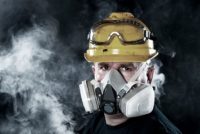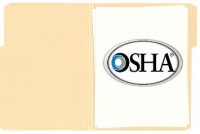Safety is a process, and as such, needs to be managed. This section offers resources to create a viable safety program, sell it to senior management, train supervisors and employees in using it, and then track and report your progress. Look also for ways to advance your own skills in these areas, both for your current job, and those that follow.
Wastewater, water, electric, and natural gas utilities expose your work-alone employees to a lot of risks and hazards every day. Electrical engineers and maintenance personnel usually work alone for extended periods of time on outdoor pumps, treatment plants, and high-voltage substations, which can be dangerous. Employees who work with toxic gases, chemicals, and other machinery […]
The National Institute for Occupational Safety and Health (NIOSH) recently issued an FAQ on seal checking respirators. Seal checking a respirator is required by 29 CFR 1910.134(g)(1)(iii), which states: “For all tight-fitting respirators, the employer shall ensure that employees perform a user seal check each time they put on the respirator using the procedures in […]
Inaction by the Trump administration on rules to mitigate workplace violence is among the top concerns voiced by the American Federation of Labor-Congress of Industrial Organizations (AFL-CIO) in its 27th annual Death on the Job survey and report.
In a new fact sheet, Safe Hot Work Practices, the U.S. Chemical Safety and Hazard Investigation Board (CSB) says that explosions and fires caused by hot work are among the most common incidents it investigates.
How well do you know the top 10 OSHA violations of 2017? Take this quiz to learn where violations such as Fall Protection and Lockout/Tagout ranked.
Use this infographic to help you plan your Safety Stand-Down event. Click here to watch! Watch BLR’s webinar, Fall Protection: Complying with OSHA’s Newly Released Final Rule Following ANSI Z359, on-demand. You’ll learn how to: Interpret how ANSI Z359 and OSHA’s fall protection rule are related Develop and implement programs for the new OSHA rules […]
Recently, more than 40 labor unions, businesses, and public health groups sent a letter to Labor Secretary Alexander Acosta asking that he restart the work of six OSHA advisory committees by filling in vacancies and otherwise allowing these bodies to meet and conduct the business of advising OSHA on worker safety and related matters.
April 9–13, 2018, was Stand-Up for Grain Engulfment Prevention Week, a joint effort by the agricultural sector, the states, and OSHA to eliminate one of the most dangerous hazards for farmworkers.
An OSHA-funded presentation on boiler safety given by Western Iowa Tech Community College (WITCC) states that there are “four major categories of catastrophic failure that exist in the boiler itself.”
Disposable filtering face piece respirators (FFR), more commonly called dust masks, are the respiratory protection most used by employees in the workplace. Disposable FFRs are not intended for repeated or extensive use; yet, for reasons of expense, convenience, and supply, they often are. At what point does a disposal FFR begin to fail to protect […]









